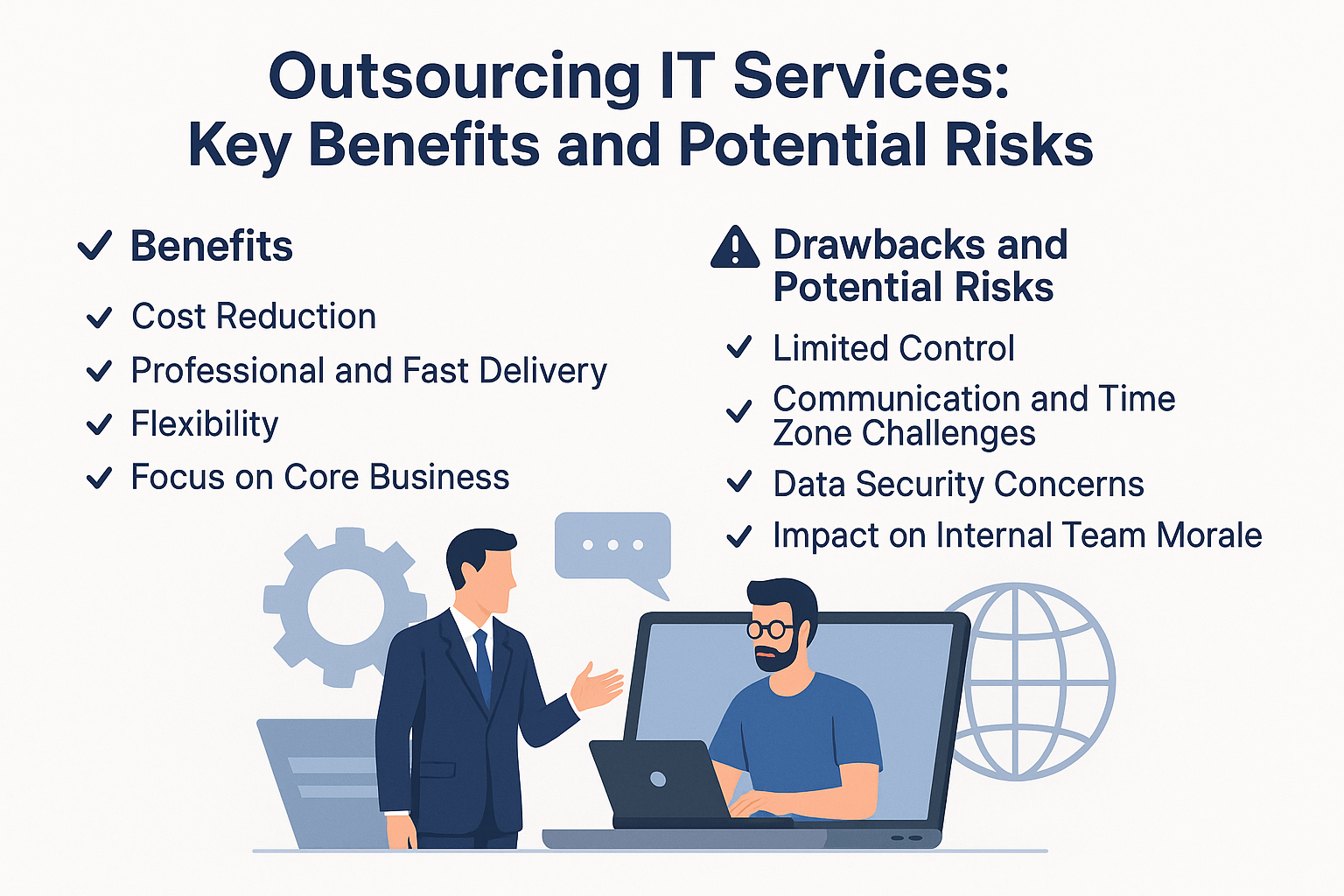
Outsourcing IT Services: Key Benefits and Potential Risks

In recent years, companies have increasingly turned to outsourcing IT services to accelerate growth, gain a competitive edge, and reduce operational costs. However, before making this decision, it’s important to carefully evaluate both the advantages and potential risks. Below, we highlight the key pros and cons of IT outsourcing.
Benefits
1. Cost Reduction
Outsourcing helps avoid expenses related to building an in-house IT department, purchasing equipment, staff salaries, and training. It is especially effective for companies that need IT support on a project basis or occasionally.
2. Professional and Fast Delivery
Outsourcing companies usually have highly specialized teams with deep expertise. This ensures quick and high-quality results, especially for web and mobile development, infrastructure setup, or cybersecurity tasks.
3. Flexibility
The team size can be scaled according to the project’s needs and deadlines. This helps you allocate resources more efficiently — whether for small tasks or large-scale implementations.
4. Focus on Core Business
Technical tasks, bugs, and monitoring are handled externally. This allows your internal team to focus more on strategic growth and customer engagement.
Drawbacks and Potential Risks
1. Limited Control
When working with an external team, you might not have full visibility over every stage — from decision-making to code delivery. This can affect quality or timing, especially if the technical specification is unclear.
2. Communication and Time Zone Challenges
Outsourcing teams may be located in different countries or time zones. Poor or delayed communication can lead to misunderstandings, missed deadlines, or errors.
3. Data Security Concerns
Outsourcing means sharing access to your databases, system architecture, or business secrets. Without a strong non-disclosure agreement (NDA), there’s a real risk of data leakage.
4. Impact on Internal Team Morale
In some cases, internal employees may feel threatened by the presence of external developers, which can affect motivation and team harmony.
🔍 Conclusion
Outsourcing IT services is a powerful strategy to boost efficiency and agility. When done right — with clear specifications, transparent communication, and the right partner — it can help your business thrive in the digital age.
However, every benefit comes with responsibility. Risks around quality, security, and control must be managed properly. Therefore, outsourcing decisions should be based not just on cost-saving but on long-term strategic planning.